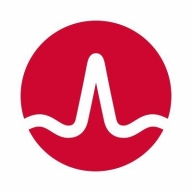

VMware Aria Operations and CloudCheckr are both leaders in cloud monitoring and management solutions. Based on the features they offer, VMware Aria Operations may have the upper hand in real-time analytics and integration with VMware, while CloudCheckr provides strong cost management capabilities.
Features: VMware Aria Operations shines with its real-time analytics, single-pane-of-glass view, and dynamic thresholding, enabling proactive issue resolution. It also deeply integrates with VMware products for efficient management. CloudCheckr excels in cost management and resource optimization across multi-cloud environments, providing insights for enhancing cost efficiency and compliance with detailed reporting capabilities.
Room for Improvement: VMware Aria Operations could enhance its user interface for better ease of use in reporting and customizing dashboards. Integration with third-party tools and automation can also be improved. CloudCheckr could benefit from improved performance with large datasets and better integration with cloud providers outside of AWS. Complexity and limited reporting capabilities are noted areas needing attention.
Ease of Deployment and Customer Service: VMware Aria Operations, typically used in on-premises or hybrid environments, offers extensive infrastructure control but can be complex to deploy, needing skilled personnel. Its customer support is generally favorable, though occasionally inconsistent. CloudCheckr, designed for public cloud environments, provides a more straightforward deployment experience and reliable customer service, but requires users to be proactive with resources for optimal results.
Pricing and ROI: VMware Aria Operations is positioned at a higher price point, suited for large, complex environments, with ROI realized through minimized downtime and efficient resource use. CloudCheckr is competitively priced, particularly benefiting users focused on cost optimization, providing a flexible pricing model that offers cost-effective options for small to mid-sized enterprises reliant on public clouds.
| Product | Market Share (%) |
|---|---|
| VMware Aria Operations | 5.7% |
| CloudCheckr | 1.5% |
| Other | 92.8% |


| Company Size | Count |
|---|---|
| Small Business | 2 |
| Midsize Enterprise | 1 |
| Large Enterprise | 7 |
| Company Size | Count |
|---|---|
| Small Business | 64 |
| Midsize Enterprise | 62 |
| Large Enterprise | 278 |
VMware Aria Operations is a high-ranking virtualization management and cloud management tool that automates and simplifies IT management to the applications it supports. It achieves this through full-stack visibility from physical, virtual, and cloud infrastructure. The product allows users to enable self-driving IT operations management across private, hybrid, and multi-cloud environments. This is conducted with the unified operations platform that delivers continuous performance, capacity and cost optimization, and integrated compliance through artificial intelligence (AI) and machine learning (ML), and predictive analytics.
VMware Aria Operations Use Cases
VMware Aria Operations has several use cases, some of which include:
VMware Aria Operations Features
The product has various features which users can utilize. Several of the features that the 2022 version of VMware Aria Operations introduced include:
VMware Aria Operations Benefits
VMware Aria Operations brings various benefits to the organizations using it. Among them are the following:
Reviews from Real Users
Mohamed N., a tech lead VMware support engineer at a tech services company, appreciates VMware Aria Operations because it is easy to use, stable, and support is always available.
Mojtaba K., a senior system administrator at a comms service provider, values VMware Aria Operations due to the fact that its dashboards give you a glimpse of what is really going on in your virtualized environment.
We monitor all Cloud Management reviews to prevent fraudulent reviews and keep review quality high. We do not post reviews by company employees or direct competitors. We validate each review for authenticity via cross-reference with LinkedIn, and personal follow-up with the reviewer when necessary.